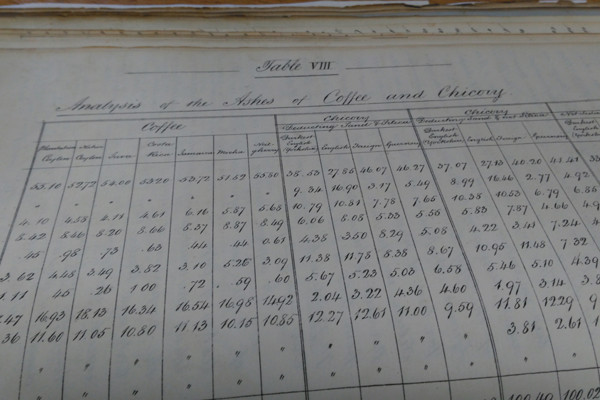International Coffee Day: Would you like chicory with that?
Today is International Coffee Day and, not that anyone needed an extra reason to have a cup, the world is taking the opportunity to enjoy a fine cup of one of the world’s most popular drinks. But what if we told you that 170 years ago, enjoying a cup of joe often meant drinking a hot cup of roasted root vegetables instead?

Coffee adulteration has been common since at least the early 1800s, when laws were already in place banning the substitution of coffee with other mixtures¹. One of the most common adulterants was chicory, a plant whose roots are baked, roasted and ground for use as a food additive.
Chicory is still in use today as a legitimate additive for various foods, including coffee and beer. But in the 1800’s, many sellers advertised their mixtures as ‘pure coffee’, so much so that our earliest lab, known then as the Government Laboratory, was tasked with analysing samples from coffee mixtures to determine if they were in fact purecoffee.
At that time, the Victorians were a bit obsessed with coffee, England’s most popular drink until tea overtook it in 1853. “In 1840, the year Victoria married Prince Albert, Britain imported 28 million pounds of tea, but we imported more than twice as much coffee at 70 million pounds,” said the Telegraph in a report on an old ONS survey.
Because the market for coffee was so strong, there was financial incentive for adulterating coffee with other substances. Now called economically motivated adulteration, this coffee adulteration led the government to have botanists and chemists study the composition of various plants, and ultimately led to advances in methods of analysing the differences between coffee, chicory and other substances.

In a letter dated 9 June 1852², English botanist John Lindley wrote to the Inland Revenue’s Chairman John Wood, “…we have carefully examined samples of Coffee and Chicory in different states and there is no difficulty in detecting their mixture however finely they may be ground if they be examined under a good microscope.”
What follows are detailed descriptions of the cells of various substances, including chicory, to which Lindley pointed out, “When roasted Chicory in powder is dropped in mere water, cold, a pale amber yellow cloud will gradually form round each particle; but roasted coffee powder gives out no such colour.”
In another letter, dated 9 November 1852³, Lindley describes how, following their research, they have been able to identify other adulterants, saying “It appears that the articles usually employed for mixing are the Roots of Mangel Wurzel, Turnips, Parsnips and Carrots, or Seeds such as Beans, Peas, Lupines, Acorns and Malt.”
Coffee adulteration still occurs today, but our tools and analysis capabilities, as well as food safety laws, have come a long way. So while you’re enjoying your cup of joe on International Coffee Day, relish the fact that you are sharing a time-honoured tradition with the Victorians, but more importantly, that you aren’t drinking roasted acorns!
¹Weighed in the Balance, by PW Hammond and Harold Egan, 1992, pg 40-43.
²Lindley, John. Chicory & Coffee. Letter. London, 9 June 1852. Inland Revenue, Laboratory of the Government Chemist.
³Lindley, John. Chicory & Coffee. Letter. London, 9 November 1852. Inland Revenue, Laboratory of the Government Chemist.
